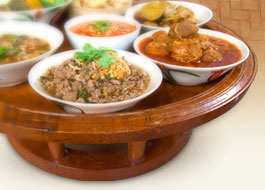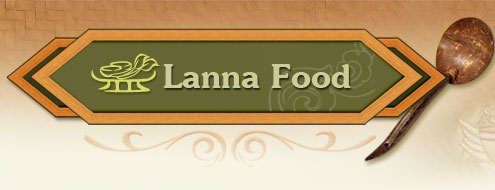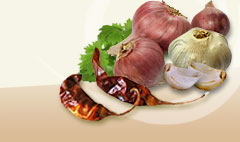China laurel |
|
|
 | Antidesma Acidum Retz. |
|
| |
 | Euphorbiaceae |
|
| |
 | China laurel |
|
| |
 | Mao, mak mao, ba mao (northern), ma mao, ton mao, mak mao (Central) |
|
| |
 | There are 170 varieties found in the tropical zone of Africa, Asia, Australia, Indonesia and the Pacific. There are 5 varieties found mostly in Thailand: ma mao soi, ma mao khai pla, ma mao khwai, ma mao dong and mamao luang. It is a deciduous tree, 5-10 m. high, hard wood, fawn tomentose, glabrous, grayish. Leaves obovate with abruptly tapering tips and pointed base, smooth, green. Inflorescence spike-like, terminal, or in the axil of the upper leaves, raceme, dioecious. Drupe ovate, compressed; stone denticular, reticulate, green when young and sour, but red when ripe and a little sweet and sour. Common in drier deciduous and pine forest, all regions of Thailand and a lot in Kanchanaburi. (Opas Bunseng, 2007) Propagated by grafting (Agricultural Extension Department, 2007) |
|
| |
 |

100 gm. has 75.20 kilo-calories, protein 0.63 gm., fiber 0.79 gm., carbohydrates 17.96 gm., calcium 13.30 mg., iron 1.44 mg., Vitamin C 8.97 mg, Vitamin B1 4.50 mcg., Vitamin B2 0.03 mcg. Vitamin E 0.38 IU (Opas Bunseng, 2007) (Information from Biological Science Division, Rajamangala Isan Sakon Nakhon University) The Sakon Nakhon Agricultural Research Institute has made wine from the fruit called Wine ma mao, as well as ma mao juice concentrateใ (Agricultural Extension Department, 2007). Lanna people use the tender leaves and shoots of ma amo khwai in kaeng het pho or kaeng het tap tao. |

Roots and shoots used to improve urination, kidney and unhealthy uterus and tendons, aches and pains, and to encourage the flow of blood and expel the placenta and other residue after a woman gives birth to a child. (Agricultural Extension Department, 2007; Wut Wuthithamwet, 1997, p. 363)
Ma mao khwai is used in Lanna medicines to treat stuffy feeling due to lots of gas. (Rattana Phromphichai, 1999 p. 7626)
|
|
| |
 |
Agricultural Extension Department. (2007). Questions-Answers on Agriculture. Retrieved 20 June2007 from http://3w.doae.go.th/webboard/view.asp?room=7&ID=1405. (in thai). Opas Bunseng. (2007). Wine ma mao...thi Sangkla Buri.Kasikon,80(2)Retrieved on 13 November2007fromhttp://www.doa.go.th/th/ShowArticles.aspx?id=2962. (in thai). Rattana Phromphichai. (1999). Mao, Mao ta khwai, Mao sai. inSaranukrom Wattanatham Thai Phak Nuea (Vol. 15,p. 7625-7626). Bangkok: Siam Commercial Bank Foundation for the Encyclopedia of Thai Culture.(in thai). Wut Wuthithamwet. (1997). Saranukrom Samunphrai: Ruam Lak Phesatchakam Thai. Bangkok: Odeon Store. (in thai). |
|
| |
|
|




